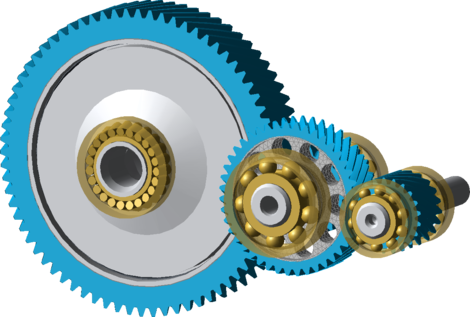Gearbox wheel bodies are often designed and manufactured to maximize power density while minimizing installation space. Strategic use of recesses and holes can achieve significant weight savings in gears.
Local tooth contact analysis plays a crucial role in gear design. Many Computer Aided Engineering (CAE) tools use extensions of the Weber-Banaschek approach to determine the gear stiffness. This is a proven method that has been deemed sufficiently precise for the simulation of tooth contact in most applications. However, the approach uses a simplified consideration of the wheel body as an elastic half-space. This simplification is not capable of representing the local stiffness properties of complex wheel bodies, making it unsuitable for gear design with elastic wheel bodies.
This paper describes a calculation method which efficiently determines the stiffness of any wheel body geometry by using statically reduced stiffness matrices from an FE model and linking them with an analytical model of the tooth contact. This makes it possible to consider the wheel body geometry in the load and pressure distribution, excitation behavior, or local micropitting analysis. In particular, the effects of the wheel body design can be taken into account for defining flank modifications in the early stages of design.
In summary, this method enables more precise analytical simulation of tooth contact. It also shows close correlation with full finite element calculations while keeping calculation times very low.
Find the full article at: https://www.powertransmission.com/articles/9160-a-model-for-considering-wheel-body-deformation-in-tooth-contact-load-distribution

